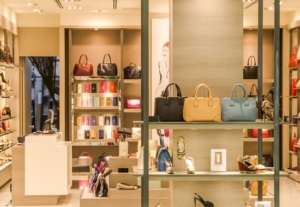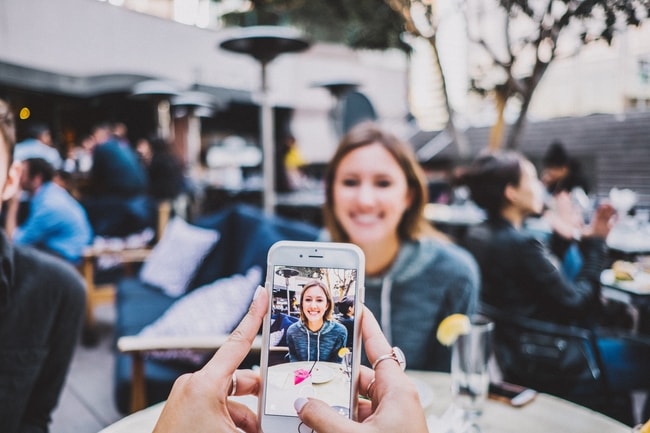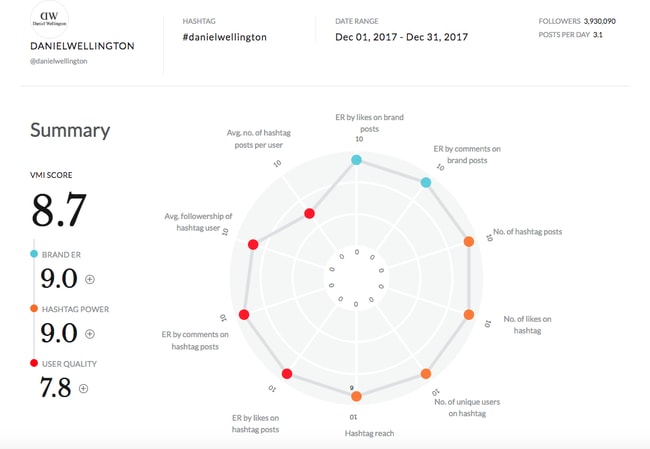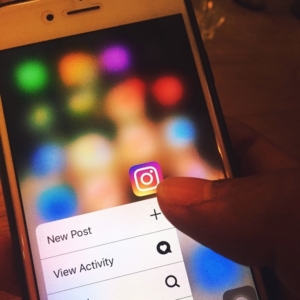Tech mistake |In 2017 people became obsessed with Instagram analysis and the level of engagement that you could achieve through the app. All we could hear were constant comparisons between Facebook and the young pretender, Instagram (owned by Facebook) where everyone loves to engage, and where everyone takes notice of what you do…apparently.
In 2017 people became obsessed with Instagram analysis and the level of engagement that you could achieve through the app. All we could hear were constant comparisons between Facebook and the young pretender, Instagram (owned by Facebook) where everyone loves to engage, and where everyone takes notice of what you do…apparently.
Marketers were clamouring to make sure brands got on board with this before the whole world caught on. Of course it wasn’t long until just about every brand, plus their office dog, was represented on the Instagram.
To quote respected Social Media experts, SocialBakers, in May 2017 at their ‘Engage’ conference: “Instagram Is Already Getting Much Better Engagement for Brands and Celebrities Than Facebook”.
To say that Instagram is ‘already getting better engagement’ than Facebook, suggests that engagement rates should increase over time, meanwhile it continues to fill to the brim with brands vying for space on your smartphone. So in the future, brands should get more engagement…but is that really how it works?
To quote SocialBakers again; “brands are getting three times more engagement on Instagram [than Facebook]”. It’s clear from our Instagram analysis that brands are currently getting more engagement, and this is not a bad thing for brands…for now. But what does the future hold for brands, their engagement, and their presence on Instagram?
Here at Photoslurp, we decided to do some of our own Instagram analysis to help us understand what engagement levels brands can really expect to achieve on Instagram. Here we analysed 25 top luxury fashion brands, each with between 1.5 and 10.5 million followers, and ranked them based on their engagement rate per post.

We found that engagement rates on Instagram are simply not as buoyant as you might think. Across all 25 brands we found an average engagement rate of just 0.52% on each post. The fact is, they just don’t get that much engagement.
These numbers might be surprisingly low to many readers, but it demonstrates the importance of context. Put simply, for big brands, which exceed 1.5 million followers, we suggest that receiving a like from 0.52% of your followership is actually a very respectable engagement rate for a single post. Based on the data we have collected from 25 top brands even Kate Spade, which topped our list, only just about managed to surpass an engagement rate of 1% on each post.
In reality, our expectations of brand engagement and Instagram analysis must take into account the size of a brands followership. Put simply the bigger the followership the harder it is to engage your audience. Of course this is nothing new, but from a marketing perspective we have to avoid putting all brands into the same group. Instead, we should measure their success on Instagram against the visible patterns of the social network, as opposed to our own preconceived and sometimes misguided ideas.

Data that we have gathered from a much larger study across 500 brands can be used to make predictions as to how much engagement brands receive relative to the size of their followership. Here we display this exact relationship (plot 1), and some examples of the exact engagement rates that we expect from brands with distinct followership sizes (box1).
Can We Explain This? Our Instagram Analysis
Our findings pose an important questions: Is Instagram really the great haven of engagement that we are told? And why are these top brands failing to reach the highest levels of engagement? Her
e we provide three explanations based on our Instagram analysis, which are not mutually exclusive…
 One. Instagram was never meant for brands: It started off as a network for people to share images with other people. At its core, there is an essential human element. Most of us spend our days interacting with other humans on some level, it’s completely natural. We don’t however typically interact with brands, and hence it’s important to remember that brands have been shoehorned into a social network for people. It’s impossible for someone to know more than 1,000 people, let alone 1 million. Brands don’t look or act like people within the network, and they will be treated as such.
One. Instagram was never meant for brands: It started off as a network for people to share images with other people. At its core, there is an essential human element. Most of us spend our days interacting with other humans on some level, it’s completely natural. We don’t however typically interact with brands, and hence it’s important to remember that brands have been shoehorned into a social network for people. It’s impossible for someone to know more than 1,000 people, let alone 1 million. Brands don’t look or act like people within the network, and they will be treated as such.
Two. People don’t treat big brands like smaller brands: With social media channels there is the idea that we can communicate with just about anyone on the network, and that this communication should be a two-way street. The problem is, the bigger a brand’s followership becomes, the less they appear like a ‘normal user’, and as such they are treated differently. Research suggests that users are less inclined to interact with other users who have very large followerships, and this of course includes big brands. They appear less ‘normal’ and hence do not fit into the social structure of the network.
Three. Big brands are well known, but not well followed: Perhaps the achilles heel for big well-known brands, is that they have never needed to grow their image through the Instagram network. ![]() They have acquired most of their followers due to recognition that precedes Instagram, as opposed to gaining followers because of the content they actually post on Instagram. As a result their role on the network is typically more passive. They never really needed to work for their followership, so they don’t work to maintain it either.
They have acquired most of their followers due to recognition that precedes Instagram, as opposed to gaining followers because of the content they actually post on Instagram. As a result their role on the network is typically more passive. They never really needed to work for their followership, so they don’t work to maintain it either.
To illustrate this third point, we can contrast our results from the Visual Marketing Index with those of newer brands that have grown through their exposure on the network. These Instagram savvy brands tend to achieve much higher engagement rates from their Instagram analysis.
Take for example Daniel Wellington, founded in 2011 (after Instagram), and pioneers of Instagram marketing. With a followership of 4 million they manage to achieve an engagement rate of 1.63%, more than 3x their predicted value based on their followership size (0.50%)

VMI Report for Daniel Wellington
In spite of Daniel Wellington’s success at bucking the trend, 1.63% is still not a huge number. And so, does the ‘brand size’ vs ‘engagement’ conundrum spell the end for brands on Instagram?
Will brands continue to lose engagement as they get bigger – Yes, this is a given. Will overall engagement rates continue to fall as users become saturated and tired of the ever increasing number of brands filling their feeds – Yes, this is extremely likely.
So, does this spell the end for brands on Instagram – No, not at all.
Getting Over Engagement
With more than 800 million monthly users, and growing fast, for sure the kids are still using Instagram. But the evidence, based on engagement rates, suggests that they don’t really want to see what your brand is up to. So what’s the solution?
In short, brands need to get their products on Instagram, BUT not onto their own business profile. Products need to be in the hands of Influencers (of ALL sizes), and importantly, real users.
But then how will users find your products if they are not on your profile, I hear you ask?

Well, the solution is surprisingly simple, use HASHTAGS. This humble system allows users to easily find any content that is related to your brand. And most importantly, it mixes content generated by normal users, and big brands alike. For a brand, it’s about facilitating other users to act as a vehicle to spread their image throughout the network. This way the brand can be projected from every corner of the network, and not just through the window of their own profile.
If you count all the likes received on a brands hashtag, and compare this with those received on the brands own media, the numbers can be surprising. Returning to Daniel Wellington we find that they achieve 5x more likes on their Hashtag posts alone (35,256,755) than they do on their brand posts alone (5,974,149). And hence brands should strive to make a success of their hashtag, as well as their own profile.
To summarise with a gentle disclaimer, we are not trying to point the finger at specific brands for their lack of performance or failed strategy on Instagram, but instead peel back some of the misconceptio
ns that we have around brands and their relationship with the network. Whilst, we hope, pointing toward some logical solutions which should help brands make a success of Instagram in the future.